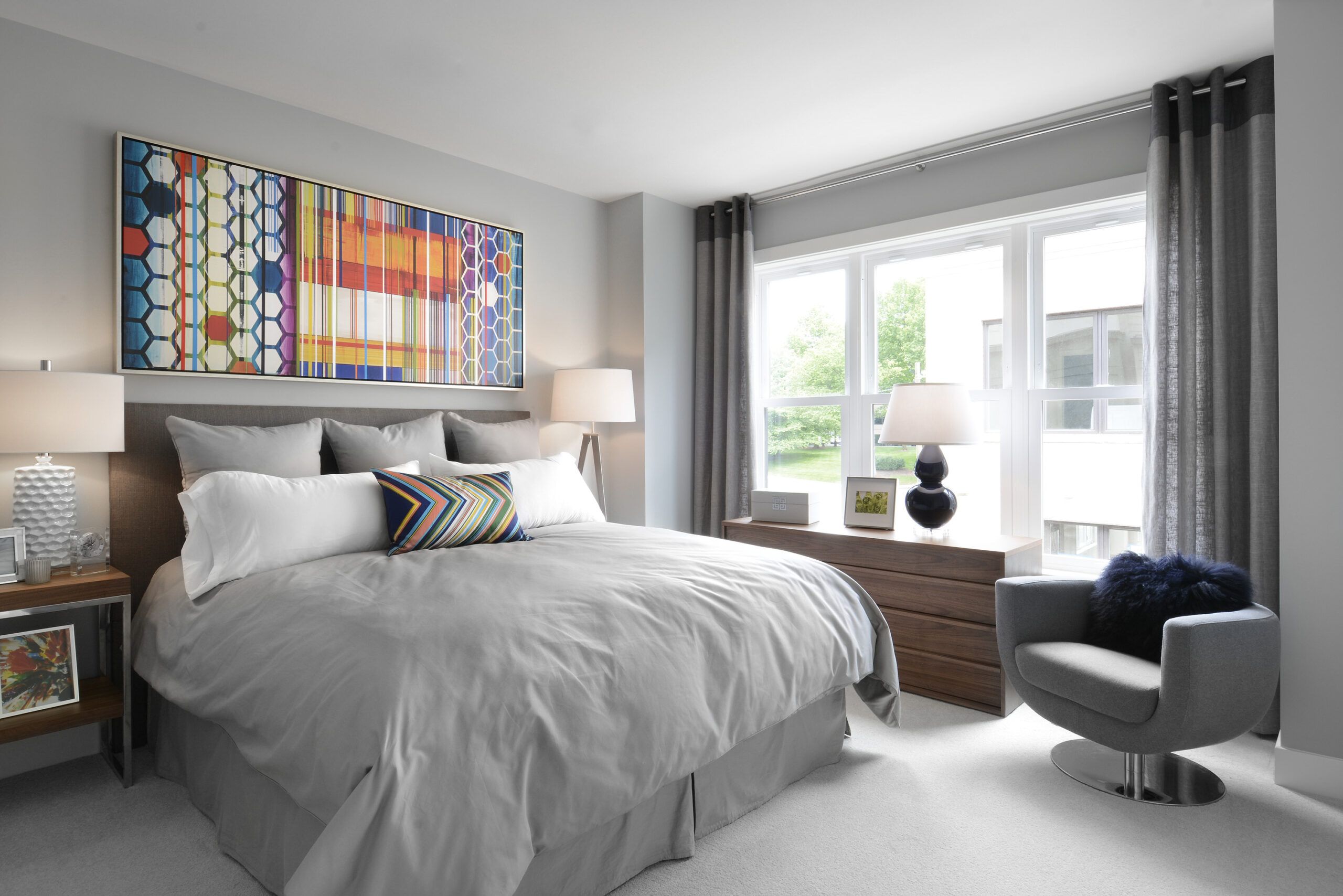Choosing windows involves making a lot of decisions. Do you want simple casement windows, or a large picture or bay window for maximum views? How far should you space them apart, and where? In this guide, we’ll provide tips for picking windows that not only enhance your home’s appearance, value, and function, but truly “wow.”
Window Shopping
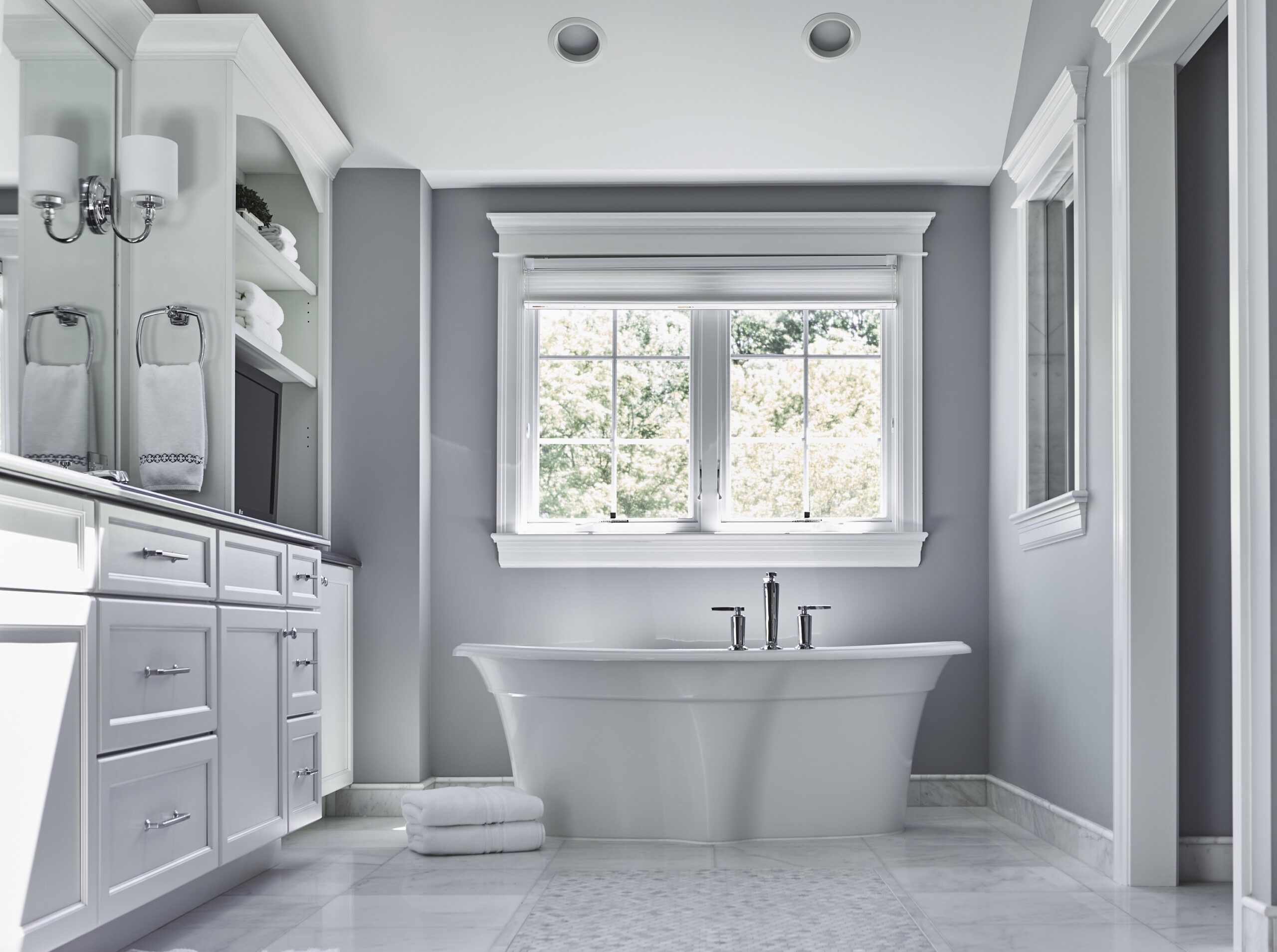
When embarking on your window shopping journey, several key factors should contribute to your decision.
Materials play a significant role in your windows’ appearance and performance. Well-made vinyl windows pair affordability with quality, coming in at a lower price point than their wood counterparts. However, they come in limited colors.
Wood windows, while more expensive, are more versatile and customizable. They require a fair amount of upkeep, but their universal appeal can add more resale value to your home.
Another important factor to think about is maintenance. Wood windows require repainting or staining every few years, while vinyl windows are virtually maintenance-free. This difference in upkeep can significantly impact your long-term costs and time investment.
Style is equally important when selecting windows. We recommend selecting windows that complement your home’s architectural character. Windows that don’t jive with the rest of your house can look out of place and detract from curb appeal.
Window Form Meets Function
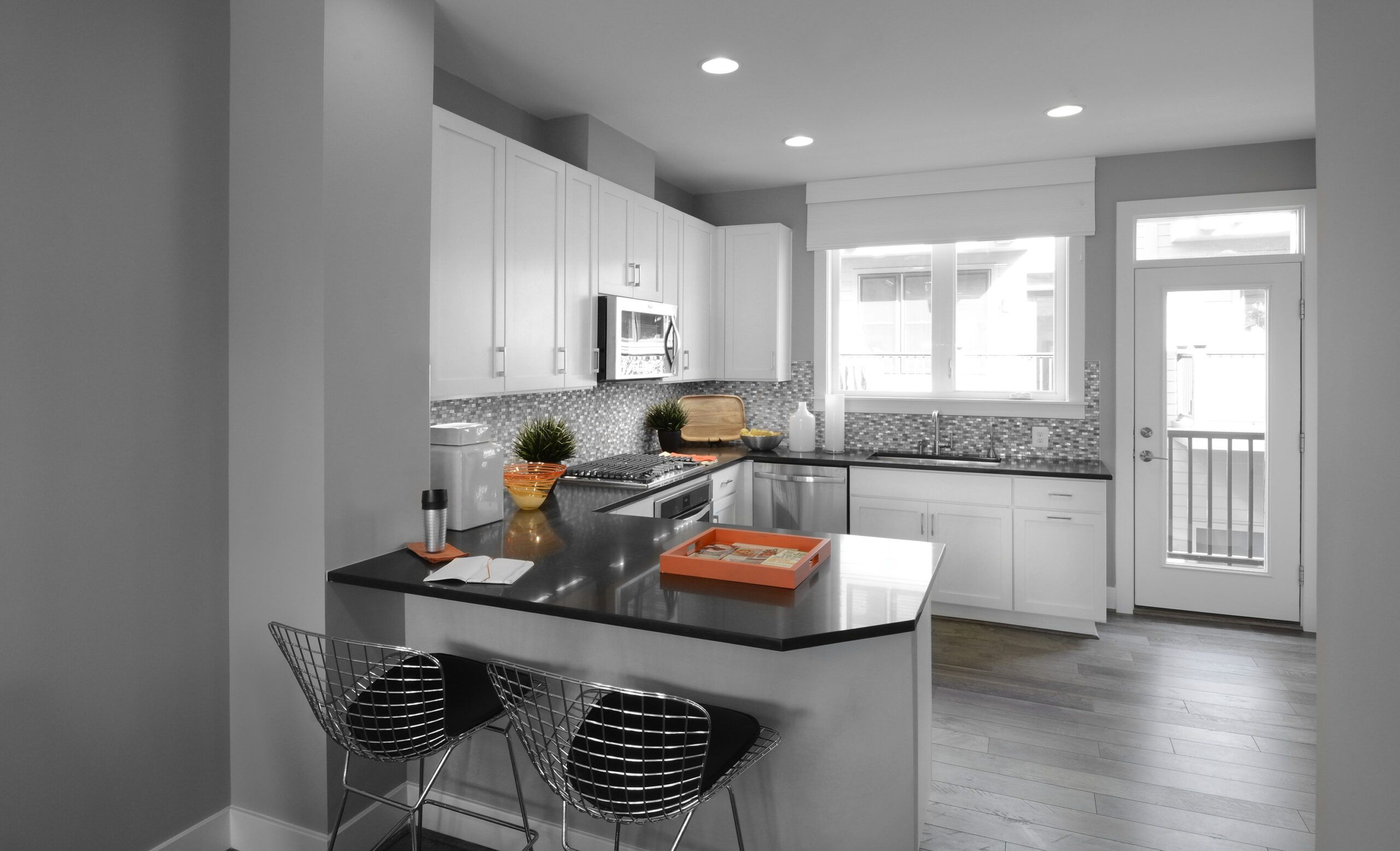
Our best advice to homeowners in the market for new windows is to consider both form and function.
For example, casement windows strike an excellent balance between style and practicality. Their unobstructed panes open outward, providing full top-to-bottom ventilation and allowing fresh air to circulate throughout your home. This design makes them particularly popular above kitchen sinks or in areas where reach might be an issue.
Casement windows also offer excellent energy efficiency. When closed, the sash presses tightly against the frame, creating a solid seal that minimizes air leakage. This can help reduce your energy bills and make your home more comfortable year-round.
Keep Your Cool
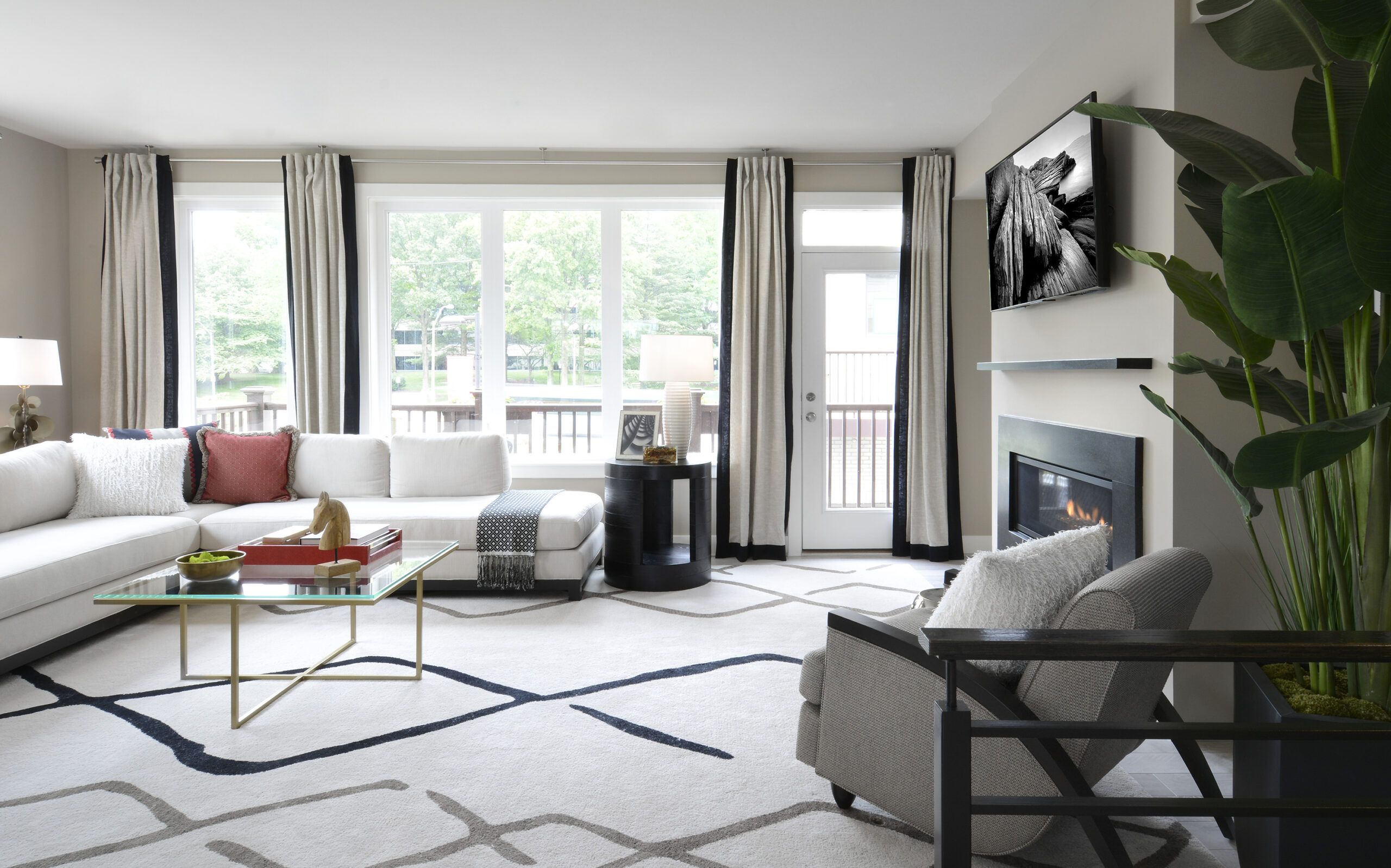
Large, expansive windows can provide breathtaking views and flood your home with natural light. However, they can also increase heat gain, make rooms uncomfortably warm, and cause UV damage to your furnishings. To combat these issues, consider windows with low-emissivity (low-e) coating.
Low-e coating is an invisible metallic layer applied to the glass that reflects infrared light. This innovative technology helps keep heat inside during winter and outside during summer, effectively regulating your home’s temperature. According to the U.S. Department of Energy, windows with Low-e coatings reduce household energy loss by 30%–50%.
If you’re shopping for windows with low-e coating, pay attention to the solar heat gain coefficient (SHGC). A lower SHGC indicates better heat-blocking capabilities, which is great for windows that receive direct sunlight. Energy-efficient window spacers and gas fills such as argon or krypton can also improve window insulation and performance.
Placement Matters
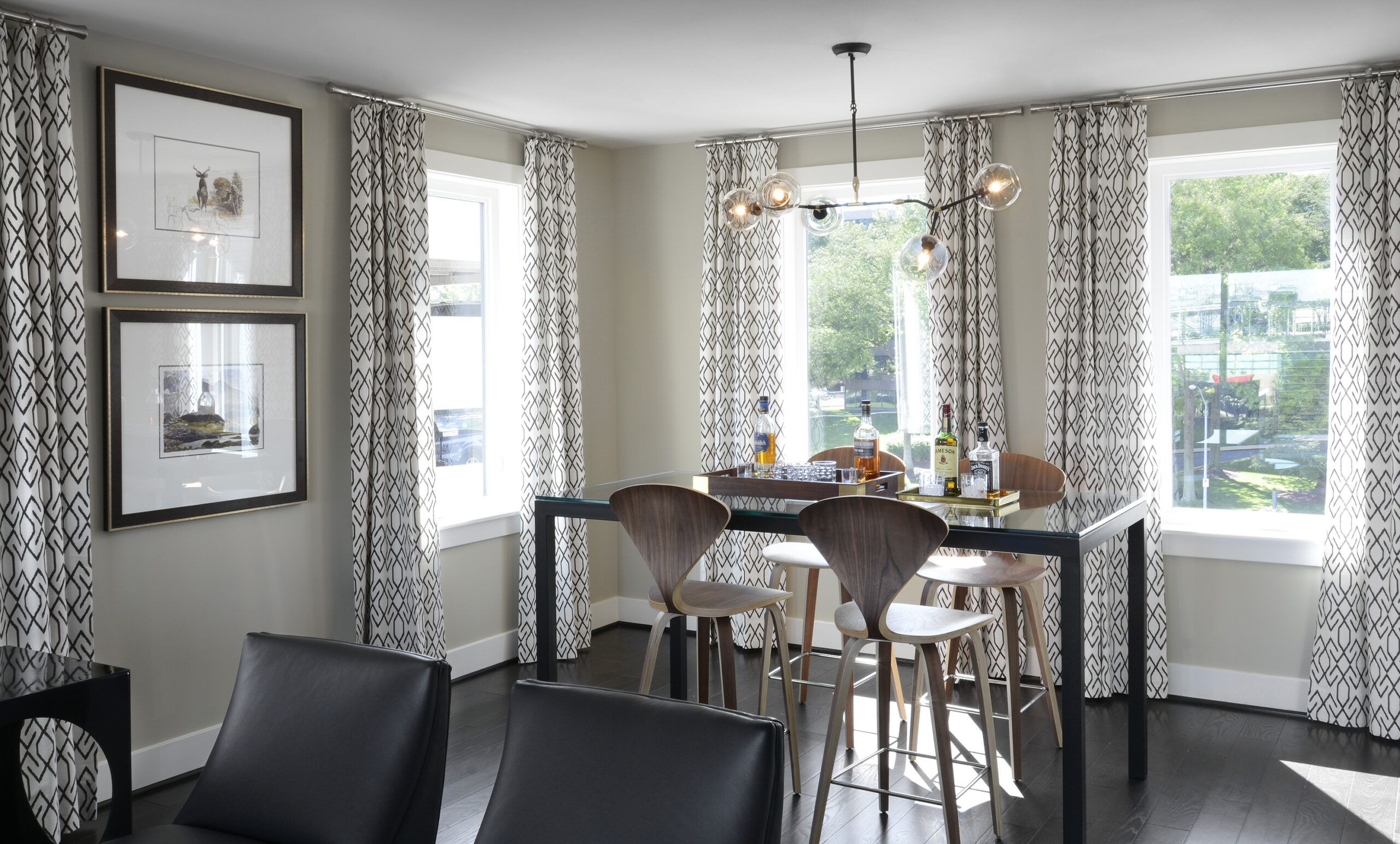
When planning window placement, consider your home’s orientation, local climate, and the direction that your windows face. In our corner room example, afternoon sunlight streams from two directions, and windows on adjacent walls capture refreshing cross-ventilation. This thoughtful placement enhances natural lighting and improves air circulation, potentially reducing the need for artificial cooling.
When designing window placement, we recommend considering the following:
- Prevailing winds: Strategically placed windows can harness natural breezes for cooling.
- Privacy concerns: Balance the desire for natural light with the need for privacy, especially in bedrooms and bathrooms.
- Shade considerations: Use trees, awnings, or window treatments to manage light and heat entry effectively.
- Solar orientation: South-facing windows receive the most sunlight and can help with passive solar heating in colder climates.
America’s Choice
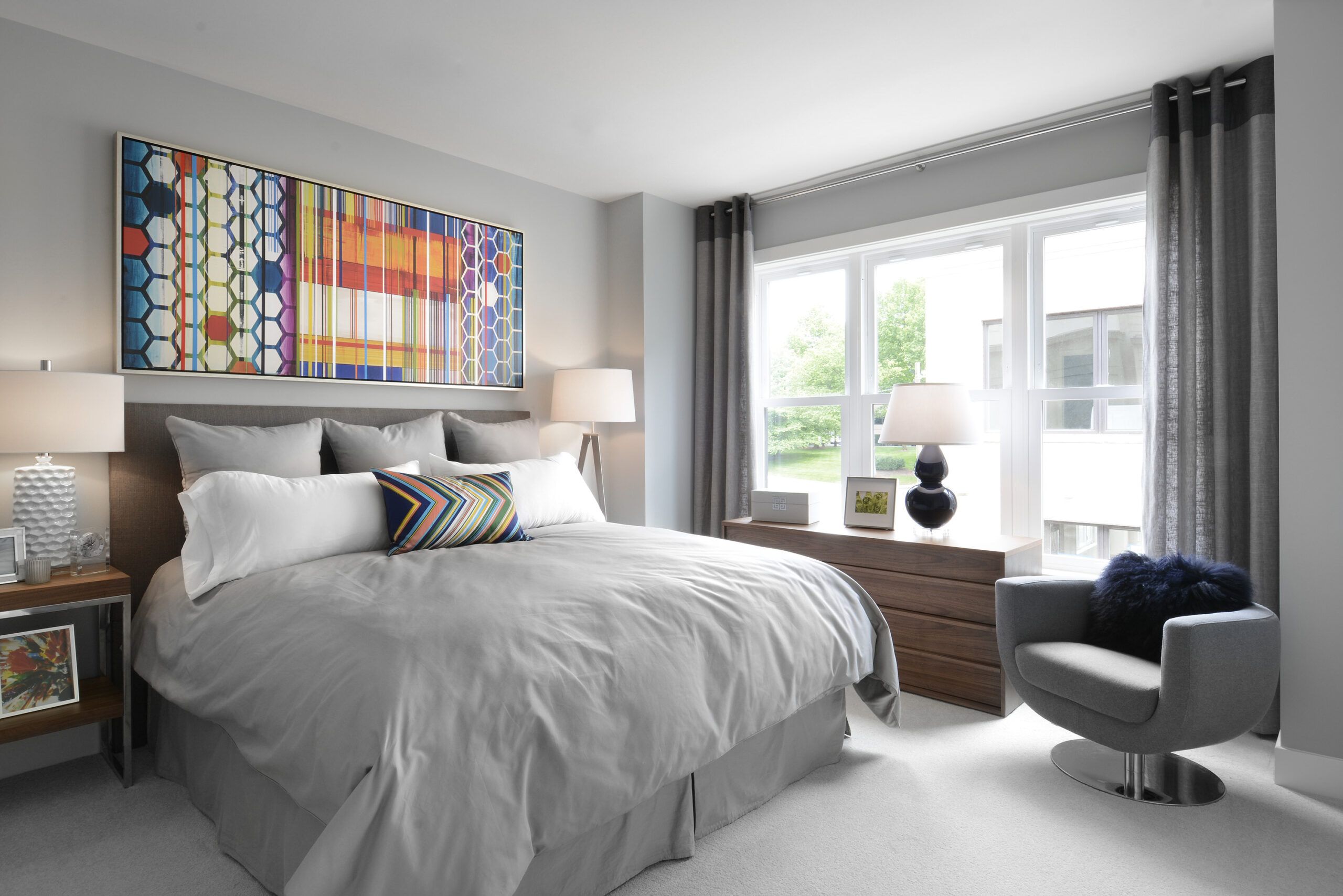
Double-hung windows remain the most popular window style in the United States, and for good reason. These classic windows feature two sliding sashes that open vertically, offering versatile ventilation options. Opening the top or bottom sash (or both) allows for efficient air circulation, making them suitable for various climates and room types.
One key advantage of double-hung windows is how easy they are to maintain. Both sashes can tilt inward, allowing you to clean the exterior side of the glass from inside your home. This is helpful for multi-story homes or windows in hard-to-reach areas. Enhanced locking mechanisms can also provide added security and peace of mind.
Clean and Current
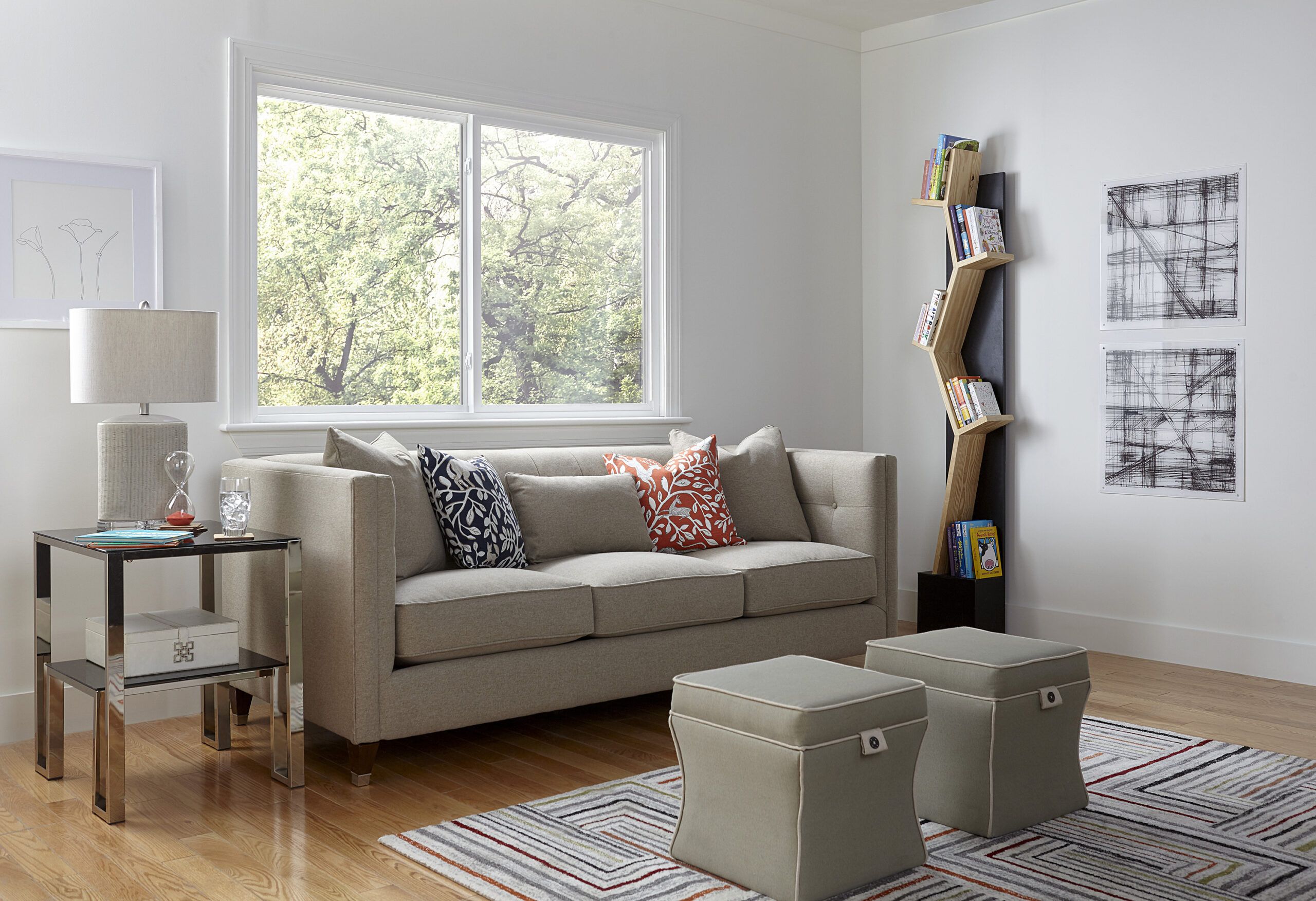
Slider windows offer a sleek and modern profile for those seeking a more contemporary look. These windows feature one or more panels that glide horizontally along a track for smooth and effortless operation. The large, unobstructed glass area of slider windows invites ample natural light and expansive views of the outdoors.
Slider windows are an excellent choice for rooms where you want to maximize ventilation without protruding window sashes. They’re particularly well-suited for spaces adjacent to walkways, patios, or decks where outward-opening windows might pose an obstruction. They are also simple to operate and often feature durable, low-maintenance frames.
Embrace the Outdoors
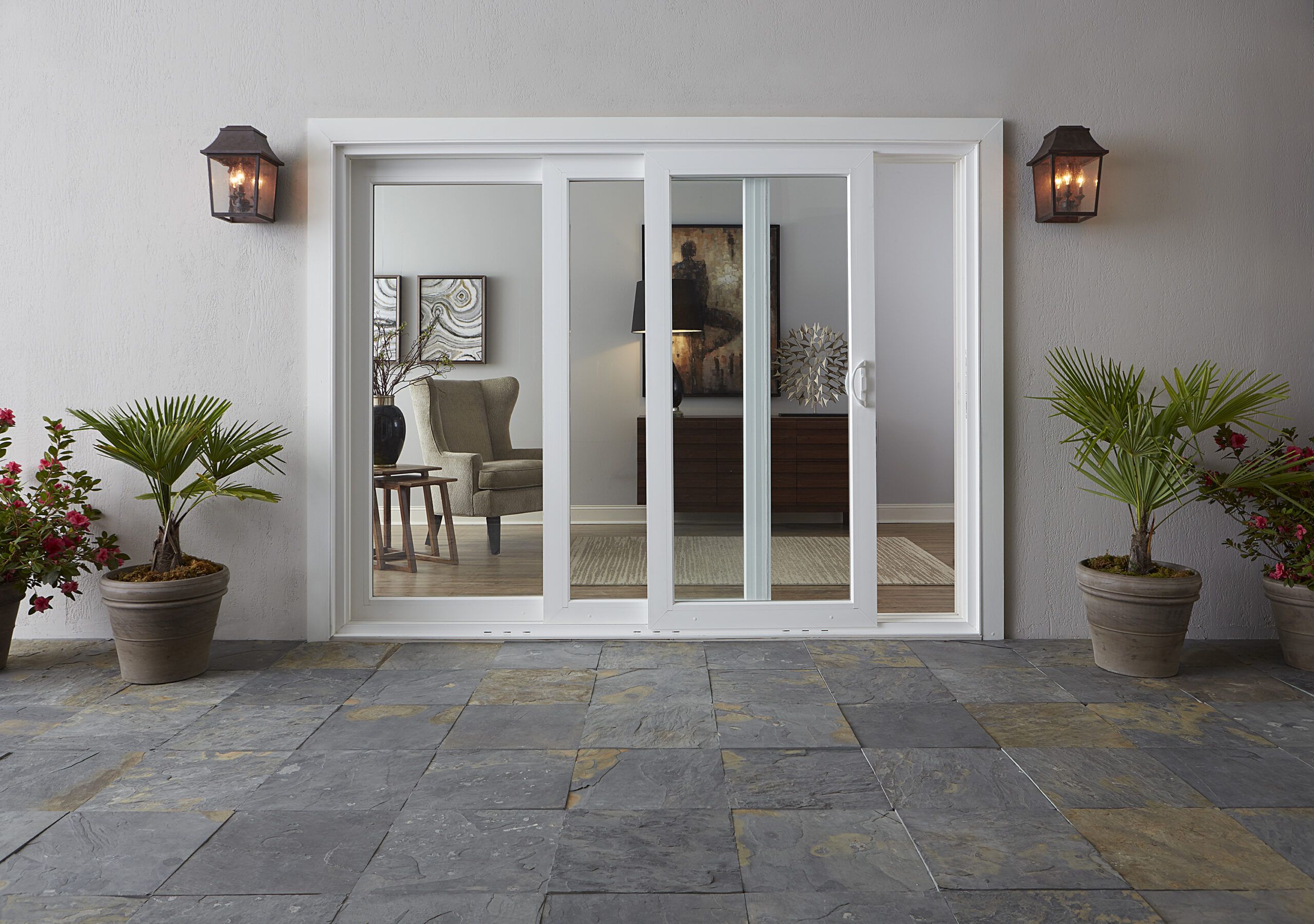
Extending your living space to the outdoors has never been easier than with multislide patio doors. These elegant doors blur the line between indoor and outdoor spaces, creating a seamless transition to your patio, deck, or garden.
The JELD-WEN vinyl patio doors pictured above offer various panel configurations. They’re available in multiple colors and interior wood grain finishes to complement any home.
When selecting patio doors, consider these additional features:
- Energy Star-certified glass to improve energy efficiency
- Impact-resistant glass for coastal areas or regions prone to severe weather
- Multi-point locking systems for increased security
- Textured glass or privacy treatments
Grille Marks
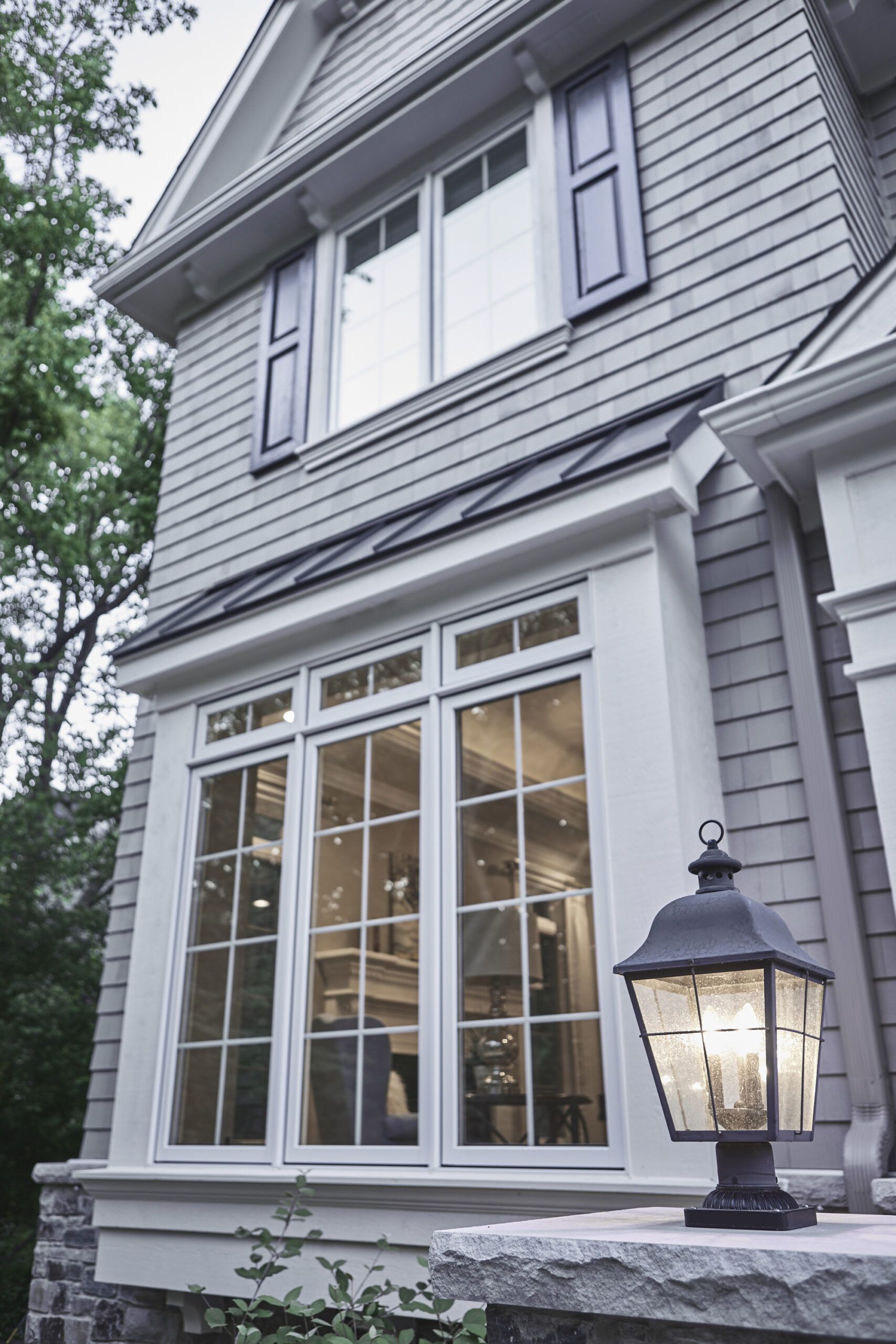
Window grilles add a charming architectural detail by dividing the glass into smaller panes. Some modern grille options rest between double glass panes, offering the aesthetic appeal of a divided pane without the maintenance challenges of true window lites.
These between-the-glass grilles provide several advantages, including enhanced energy efficiency, customizable designs, easy maintenance, and durability thanks to reduced exposure to the elements.
Craftsman Chic Windows
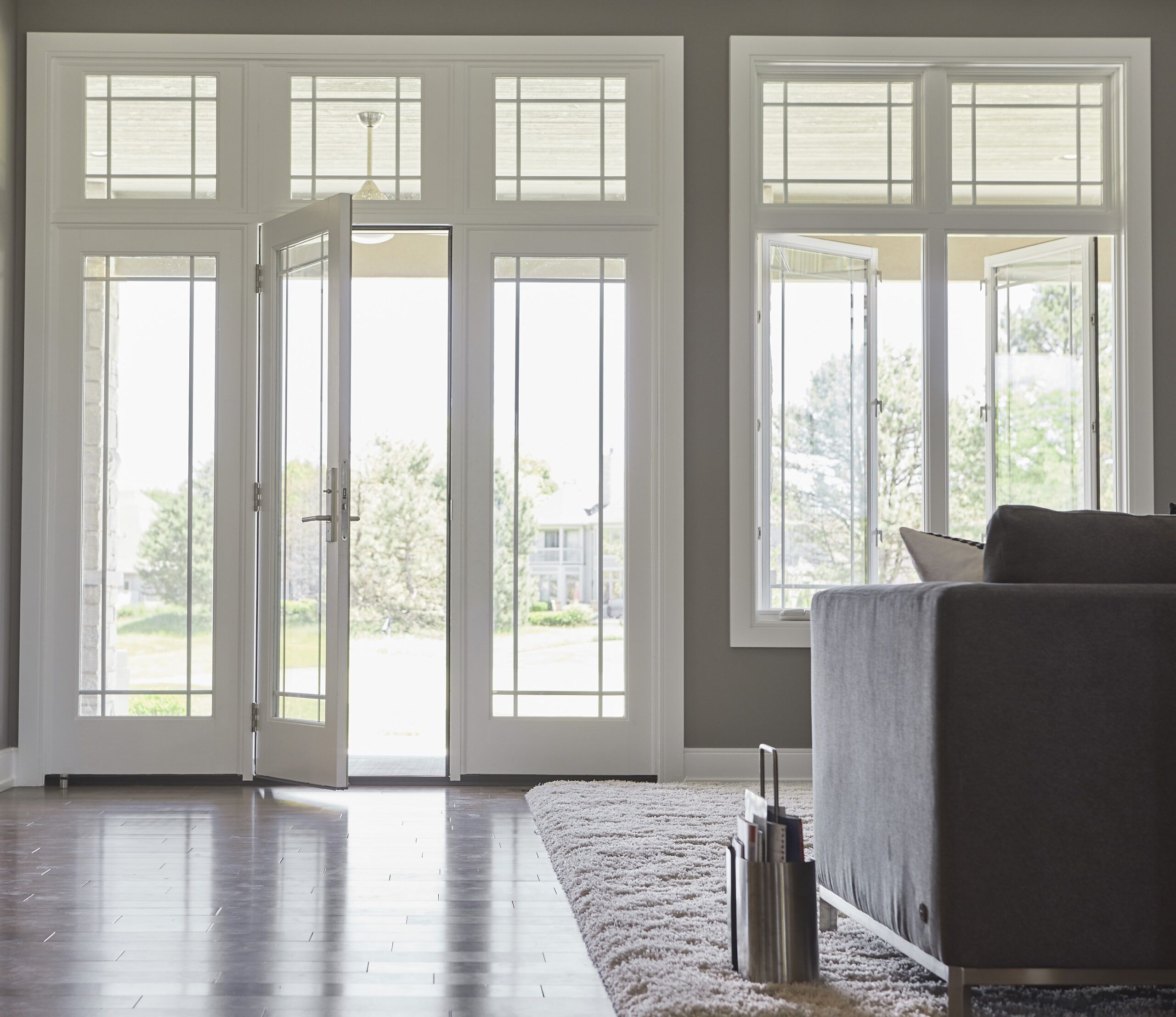
Architect Frank Lloyd Wright popularized the prairie design, which features horizontal and vertical lines that create a sense of harmony with nature. Prairie-style grilles feature distinctive geometric patterns and can add a touch of Craftsman charm to your windows and patio doors.
When you’re incorporating Prairie-style grilles, consider mixing materials of different textures and finishes, matching patterns across windows and doors for cohesion, or using them selectively to create focal points around your home.
Put the “Great” in Your Great Room
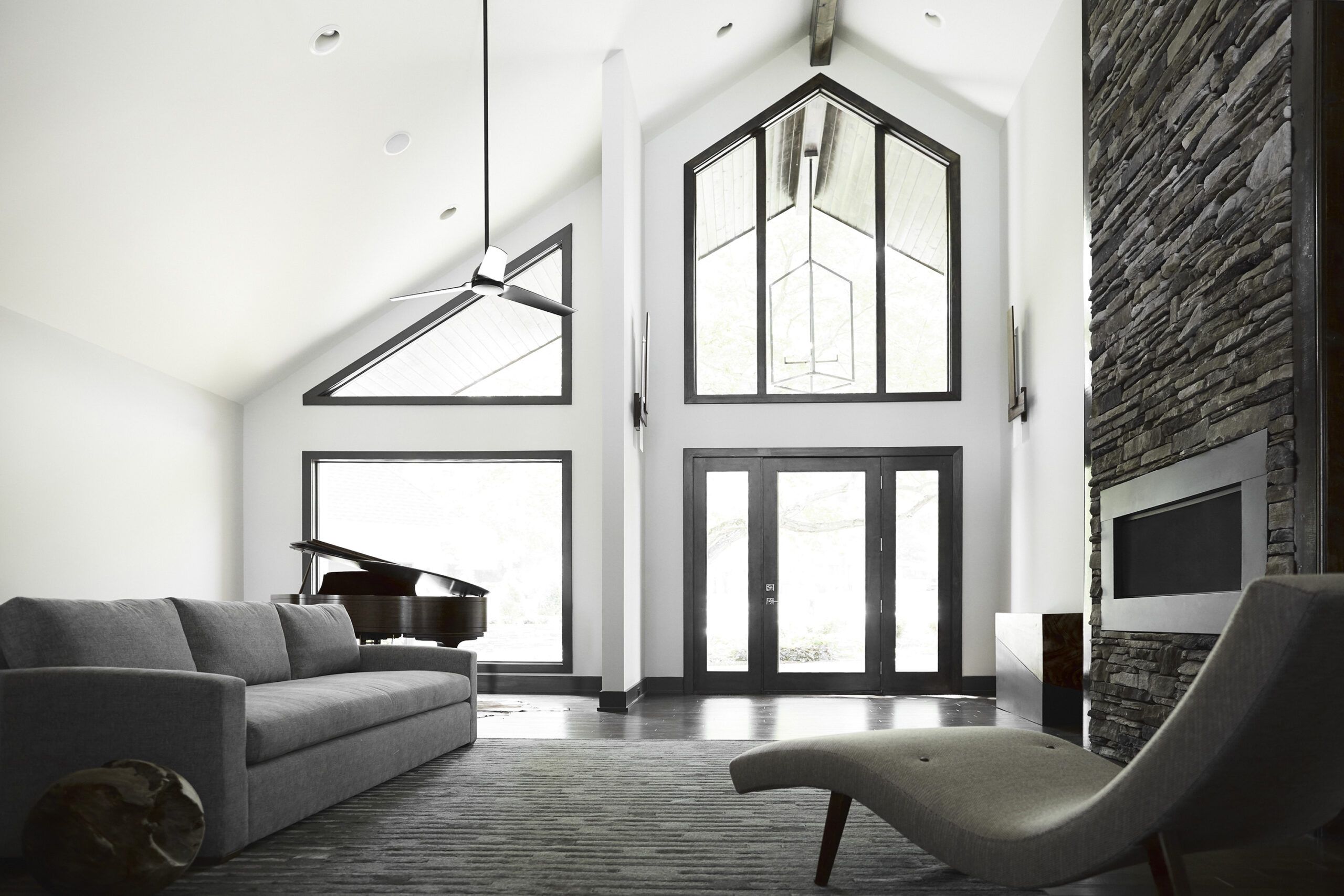
Large, architecturally striking windows flood the space with natural light and become a focal point of the room. When designing windows for such spaces, consider the following:
- Energy efficiency to maintain comfortable temperatures
- Coordinating with other architectural elements, such as beams or moldings
- Scale and proportion relative to the room size
- Adding window treatments for light control and privacy when needed
Soaring ceilings like those pictured above can benefit from bold designs and dark, intense trim. These can command attention and emphasize the room’s impressive height.
However, we recommend balancing these dramatic elements with your home’s overall design for a cohesive look. Integrating curtain rods or designer shades can also add a layer of sophistication and function.
Striking Scenery Through Your Windows
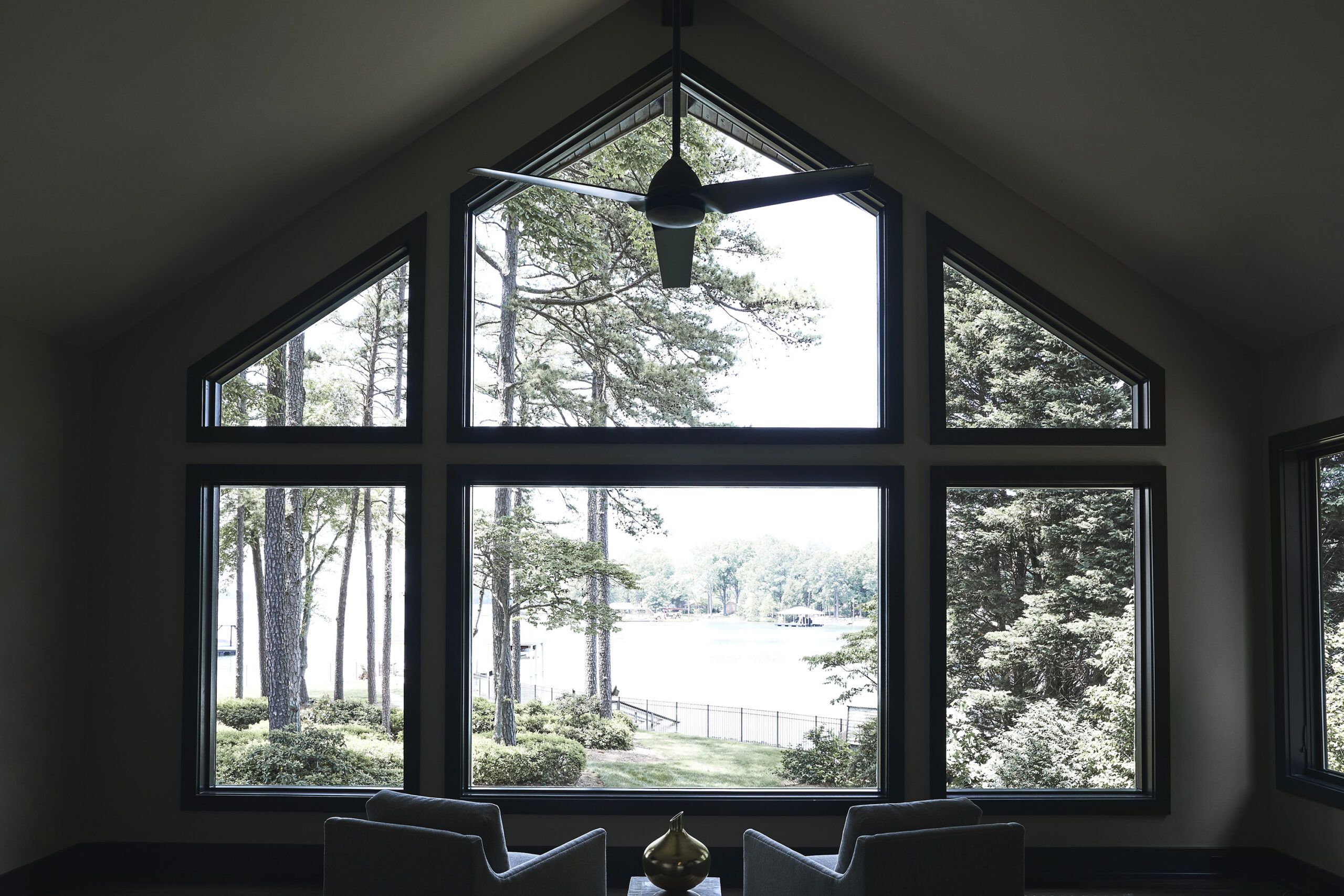
If you’re fortunate enough to have a scenic landscape, custom-designed statement windows can help you make the most of it. These windows capture the finest light and optimal views, turning your surroundings into living art.
For projects of this scale, you’ll need to consult with a window specialist who can guide your design decisions. They can help you pinpoint the right scale, frame material, structural requirements, energy efficiency, and aftermarket privacy or shade options.
Window Wall
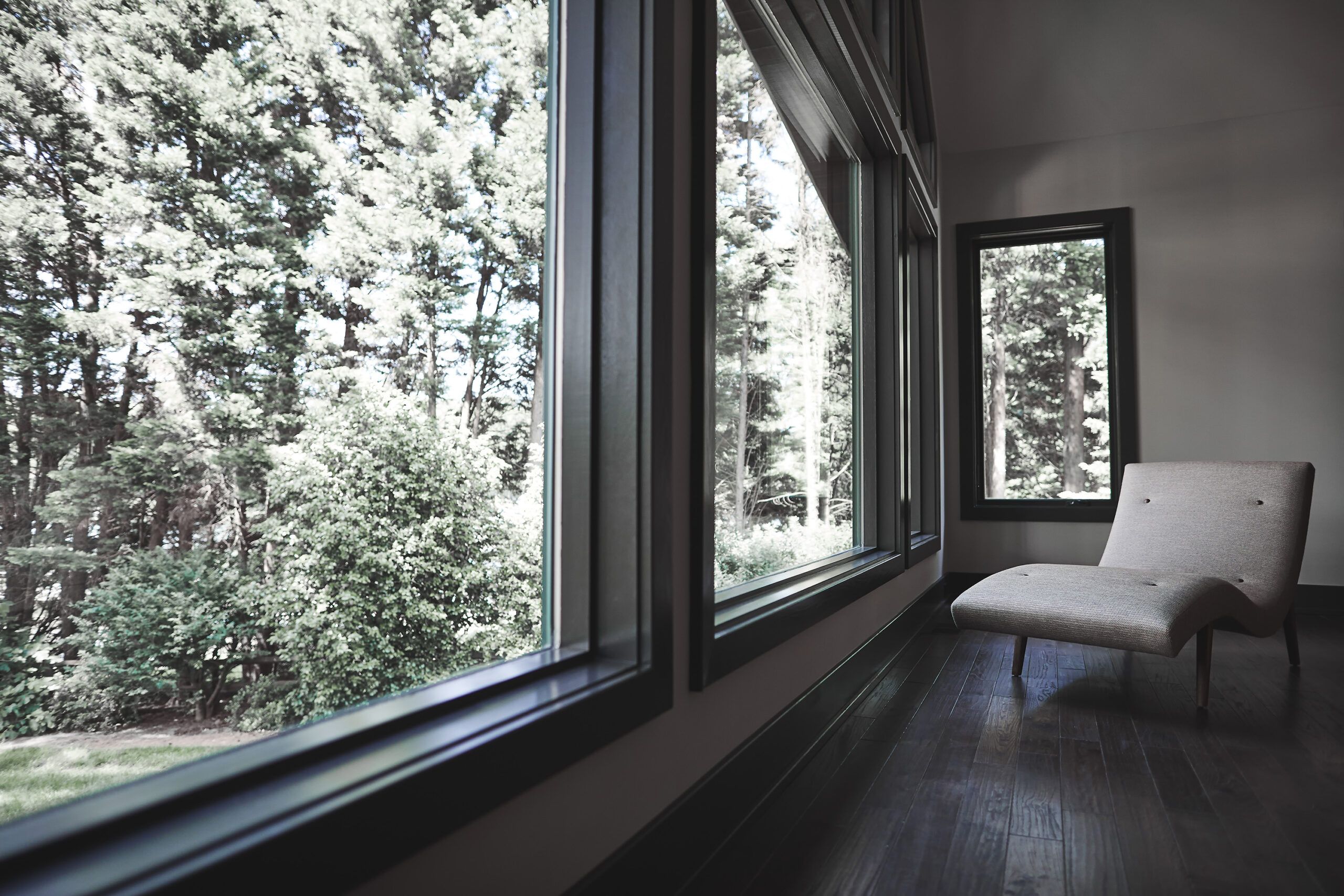
A window wall creates an architectural statement that blurs the line between indoors and outdoors. These impressive, oversized wood windows offer unobstructed views and flood interiors with natural light. Natural wood frames allow you the flexibility to stain, clear coat, or paint to achieve the exact look you desire.
If you’re thinking about adding a window wall, weigh factors such as energy efficiency and heat gain, maintenance needs, privacy solutions, and structural integration and support requirements.
Panoramic View
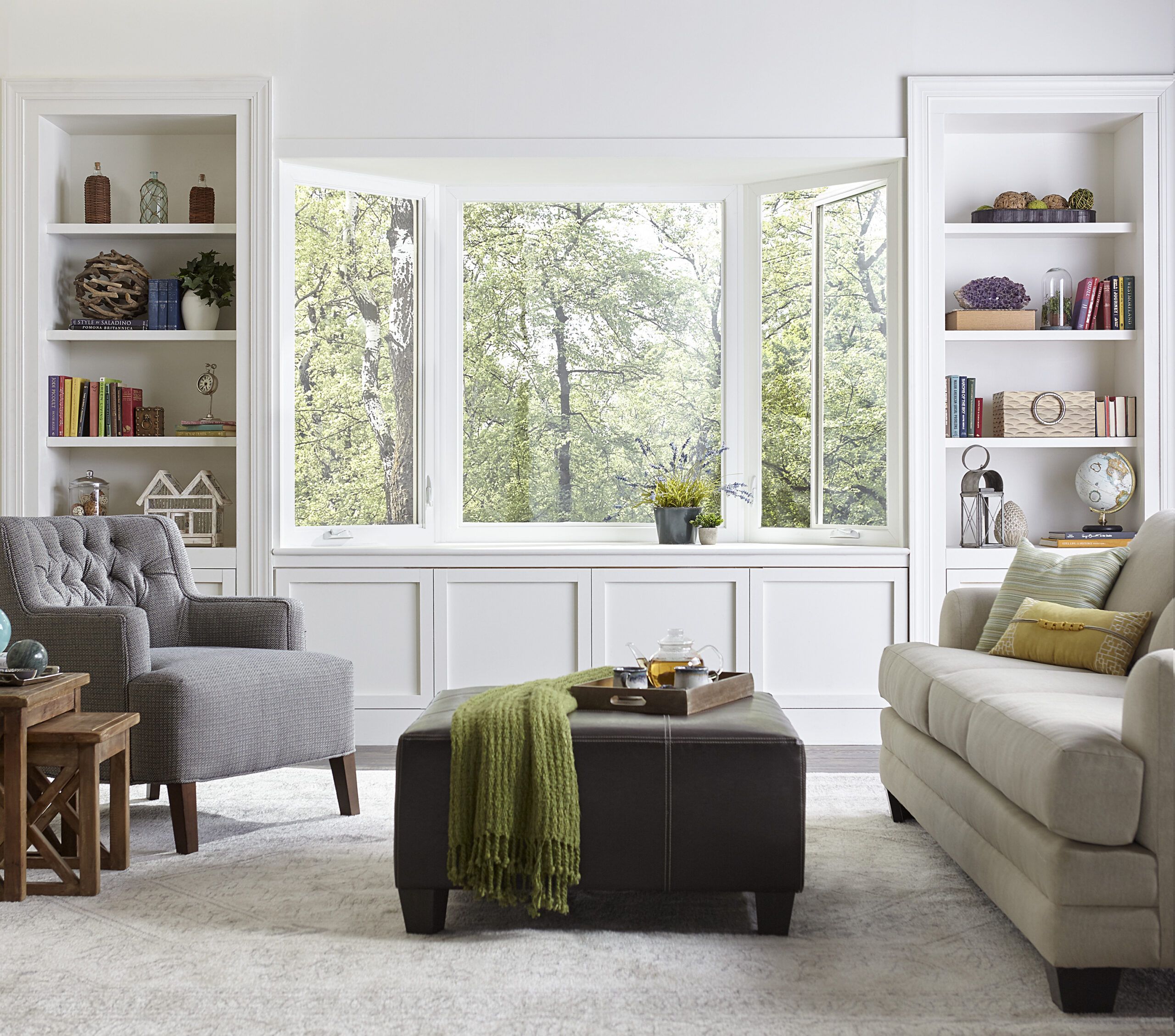
Bay windows add a three-dimensional quality to your home, creating depth and maximizing your view. These windows typically have a large central fixed pane flanked by two smaller operable windows, often casements. The protruding design enhances the view and creates additional interior space, perfect for a cozy reading nook or display area.
Bay windows can enhance curb appeal and resale value, deliver natural light from several angles, and provide space for custom seating or storage within the bay recess.
As always, we recommend consulting a window specialist for custom solutions and to ensure your choices align with local building codes and energy requirements.
